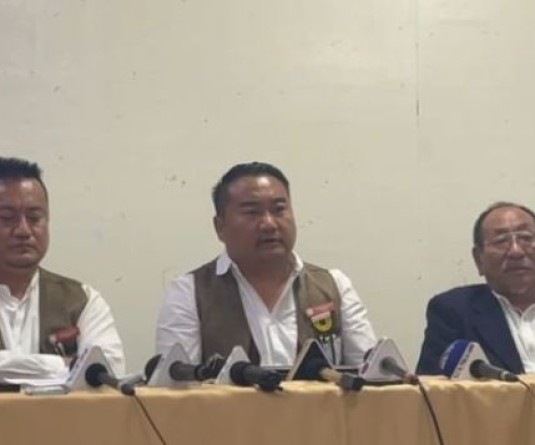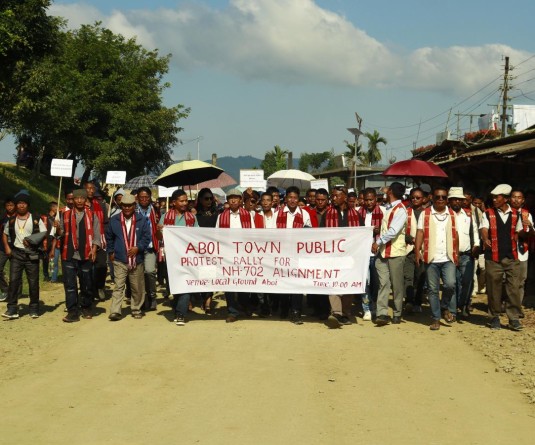
• NSF concerned by lax implementation of BEFR Act
• Seeks new modalities for implementation of ILP • Asks Nagaland Government to empower local bodies
KOHIMA, SEPTEMBER 15 (MExN): The Naga Students’ Federation (NSF) has written to the Nagaland State Chief Secretary expressing concern over “the influx of non-locals and illegal immigrants into Nagaland and the lax implementation of the Bengal Eastern Frontier Regulation (BEFR) Act of 1873.”
The NSF, in its letter reminded that the purpose of BEFR Act 1873 was to protect the indigenous inhabitants of Nagaland, the land and its resources from exploitation by outsiders. It however lamented that the Inner Line Permit (ILP) system in Nagaland is not enforced in letter and spirit in line with the BEFR Act 1873.
It stated that the present ILP system in Nagaland lacks stringent terms for application, while adding that “issuing of ILP and penalization of ILP defaulters had made it liberal, porous and ineffective, thus negating the very purpose for which the Act was enacted.”
The NSF observed that the present ground reality is such that “there is an impending threat of the Naga indigenous inhabitants being out-numbered by the illegal immigrant populace.” It therefore asked the Government of Nagaland to immediately frame a strong modality which can tackle the present challenges of “incessant influx of non-locals and illegal immigrants.”
Towards this, the NSF listed a series of terms and conditions to be incorporated into the new modality for implementation of the BEFR Act of 1873.
It asked that Dimapur District come under the purview of Inner Line Permit Regulation and that documents to be produced while applying ILP should include: (a) Applicants (Main Land Indians): Voter’s ID Card, Permanent Residential Certificate; (b) Applicants (Assam): Voter’s ID Card, Permanent Residential Certificate, Land Patta, Electoral Roll enrolment duly signed by the District Magistrate and Election Officer, National Citizen Register (NCR) (issued before 1963); and (c) Local Guarantor: i. Indigenous Certificate, Residential Proof Certificate and Identity Proof
Certificate, ii. A joint photograph with his/her ward should be produced.
The NSF also proposed that ILP applicants should produce two local guarantors (Employer and House Owner). Both the guarantors, it said should sign an undertaking (Local guarantors and the applicant should be physically present while applying for ILP; that he/she should deport his/her ward on the expiry of ILP and report to the ILP Monitoring Cell; that he/she should be held responsible if legal cases against his/her ward arises.
The NSF also stated that validity of ILP should be a maximum of 15 days.
Regarding administrative mechanisms, it proposed the setting up of separate ILP Monitoring Cells in each district headed by the Additional Deputy Commissioner; main entry and exit point should be installed with CCTV; periodical orientation course for administrative officials in the ILP Monitoring Cell and police personnel manning the main check gates; and proper records of ILP holders, Guarantors and deportation should be maintained. It also asked that any kind of Permits/License/Certificates should not be issued to ILP holders, and that a person should be limited to act as guarantor of two ILPs only.
The NSF then advised upgrading the present Industrial Training Institutes (ITIs) to Skill Development Institutions and adding of more relevant trades/courses in all the districts. It said that the Government of Nagaland should initiate sensitization programmes with the Village Councils, Town/Colony/Ward leaders and apex tribal bodies in all the districts. Moreover, the government should empower the above local bodies for the successful implementation of the ILP system in Nagaland, it added.





